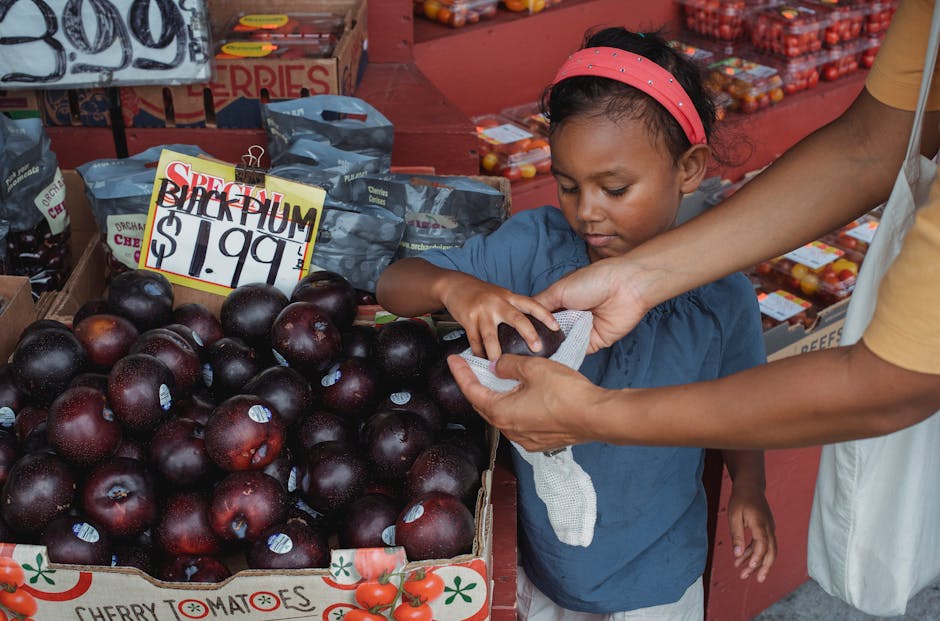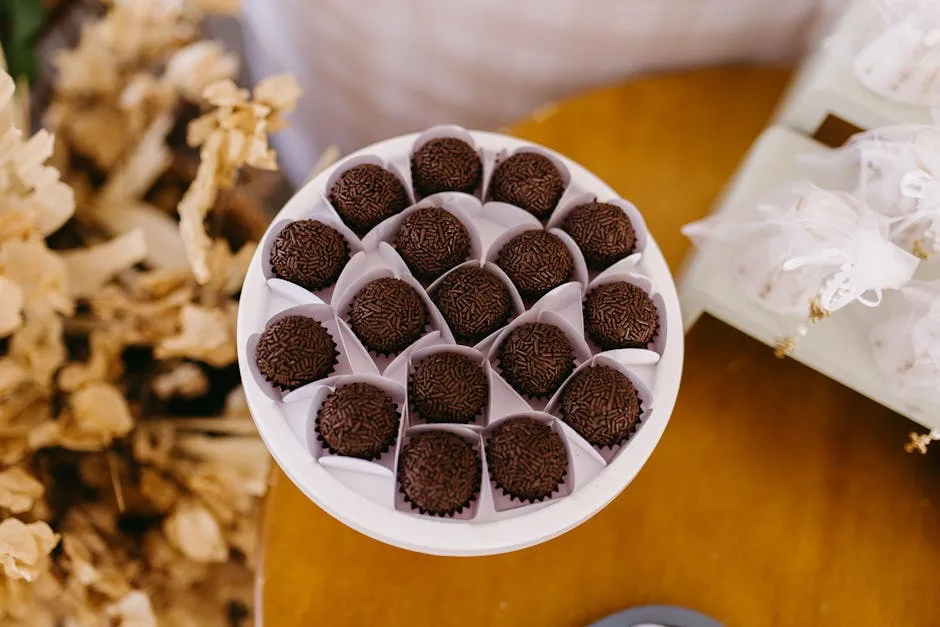- A Journey Through Brazil's Best Flavors
- 1. Feijoada: The Soul of Brazil on a Plate
- 2. Churrasco: More Than Just a Barbecue
- 3. Pão de Queijo: The Cheesy, Gluten-Free Wonder
- 4. Moqueca: A Tale of Two Stews
- 5. Acarajé: The Fiery Heartbeat of Bahia
- 6. Coxinha: The Perfect Golden Teardrop
- 7. Brigadeiro: The Sweetest Celebration
- 8. Pastel de Feira: A Market Day Essential
- 9. Vatapá: Creamy, Nutty, and Unforgettable
- 10. Açaí na Tigela: The Amazon's Superfood Bowl
A Journey Through Brazil’s Best Flavors
Thinking about brazilian food might conjure up images of sizzling, perfectly grilled meats, and you wouldn’t be wrong. But brazil‘s culinary landscape is a vast, vibrant, and incredibly diverse tapestry woven from indigenous, African, and portuguese threads. It’s a cuisine of comfort, celebration, and incredible regional variety. From the coconut-laced seafood stews of the northeast to the hearty bean-and-meat feasts of the south, every bite tells a story.
Forget what you think you know and get ready to dive into a world of flavor that’s as exciting and soulful as the country itself. We’re going on a journey through ten essential dishes that capture the heart of Brazilian cooking. Get your appetite ready!
1. Feijoada: The Soul of Brazil on a Plate
If there’s one dish that represents Brazil, it’s Feijoada. More than just a meal, it’s a weekly cultural event, traditionally enjoyed for Saturday lunch with family and friends. At its core, feijoada is a rich, slow-cooked stew of black beans and a generous variety of salted and smoked pork and beef cuts. We’re talking pork ribs, sausage, dried beef (carne seca), and sometimes even ears and trotters for those who appreciate the full, authentic experience.
The magic isn’t just in the stew itself, but in the array of side dishes that accompany it. A proper feijoada spread includes fluffy white rice, sautéed collard greens (couve), zesty orange slices to cut through the richness, and farofa—toasted cassava flour that adds a delightful crunch. It’s a hearty, complex, and deeply satisfying dish that’s meant to be savored over hours of good conversation.
Where to Find It: Look for restaurants across Brazil advertising ‘Feijoada aos Sábados’ (Feijoada on Saturdays). In Rio de Janeiro and São Paulo, you’ll find both traditional ‘botecos’ (casual bars) and upscale restaurants serving their own special versions.
2. Churrasco: More Than Just a Barbecue
This is the Brazilian barbecue experience that has taken the world by storm. Churrasco is all about high-quality meat, grilled to perfection on long skewers over an open flame. The star of the show is undoubtedly the ‘picanha’ (top sirloin cap), a tender, juicy cut with a thick layer of fat that melts as it cooks, basting the meat in its own glorious flavor. Other popular cuts include ‘alcatra’ (top sirloin), ‘fraldinha’ (flank steak), and ‘coração de galinha’ (chicken hearts), a beloved delicacy.
The best way to experience it is at a ‘churrascaria’ that offers ‘rodízio’ style service. Here, waiters, known as ‘passadores’, roam the dining room with skewers, slicing meat directly onto your plate until you signal that you’re full by turning over a little card on your table. It’s an interactive and carnivorous feast, usually accompanied by a massive salad and hot foods bar.

3. Pão de Queijo: The Cheesy, Gluten-Free Wonder
Imagine a warm, light, and airy bread roll that’s crispy on the outside and wonderfully soft and chewy on the inside, with a savory, cheesy flavor that’s utterly addictive. That’s pão de queijo. These little golden orbs are a beloved staple for breakfast or as an afternoon snack (‘lanche’) all over Brazil.
What makes them unique is that they are made not with wheat flour, but with ‘polvilho’ (tapioca or cassava starch), making them naturally gluten-free. The cheese used is typically ‘queijo Minas’, a mild, slightly salty cheese from the state of Minas Gerais, which is considered the birthplace of this iconic treat. You can grab a bag from a street vendor, a ‘lanchonete’ (snack bar), or a ‘padaria’ (bakery) on just about any corner.
4. Moqueca: A Tale of Two Stews
Moqueca is a stunningly fragrant and flavorful seafood stew that will transport you straight to the Brazilian coast. It’s a perfect example of regional culinary differences, as there are two famous versions. The ‘Moqueca Baiana’, from the state of Bahia in the northeast, is the richer of the two. It gets its vibrant color and distinctive flavor from dendê oil (palm oil), coconut milk, bell peppers, onions, tomatoes, and a generous amount of fresh cilantro.
The ‘Moqueca Capixaba’, from the state of Espírito Santo, is a lighter, more delicate version. It omits the palm oil and coconut milk, instead using annatto oil for color and relying purely on the fresh flavors of the fish, shrimp, tomatoes, and herbs. Both are traditionally cooked and served in a special clay pot (‘panela de barro’) and are best eaten with rice and ‘pirão’, a savory fish porridge.
5. Acarajé: The Fiery Heartbeat of Bahia
A walk through the streets of Salvador, Bahia, is an assault on the senses, and the most captivating aroma is often that of acarajé frying. This iconic street food is a cornerstone of Afro-Brazilian culture and cuisine. It’s a fritter made from a purée of black-eyed peas, seasoned with onions and salt, and then deep-fried to a golden crisp in dendê oil.
The real adventure begins when you order it. The ‘baiana’, the woman traditionally dressed in white who sells them, will slice the fritter open and ask if you want it ‘quente’ (hot) or ‘frio’ (not hot). ‘Quente’ refers to the amount of fiery chili sauce she’ll add. It’s then stuffed with vatapá (a creamy shrimp paste), caruru (an okra gumbo), and a fresh vinaigrette salad. It’s a complex, spicy, and unforgettable taste of Bahian soul.
6. Coxinha: The Perfect Golden Teardrop
If Brazil had a king of snacks (‘salgados’), the coxinha would wear the crown. This beloved comfort food is found in every bakery, snack bar, and party in the country. A coxinha is a teardrop-shaped marvel consisting of savory, shredded chicken (often mixed with cream cheese) encased in a soft potato-based dough, which is then breaded and deep-fried to a perfect golden-brown.
The name ‘coxinha’ translates to ‘little thigh’, a nod to its shape and chicken filling. The contrast between the crispy outer layer and the soft, creamy filling is what makes it so irresistible. Squeeze a little lime or dab some hot sauce on it for the full experience. It’s the ultimate grab-and-go snack.
7. Brigadeiro: The Sweetest Celebration
No Brazilian birthday party is complete without brigadeiros. These simple, truffle-like sweets are the country’s most cherished dessert. The recipe is deceptively easy: condensed milk, cocoa powder, and butter are cooked together until thick and fudgy. The mixture is then cooled, rolled into small balls, and coated in chocolate sprinkles.
Don’t let the simplicity fool you. The result is a decadent, gooey, and intensely chocolatey treat that’s pure happiness. While the classic chocolate version is the most common, you’ll also find creative variations made with coconut (‘beijinho’), pistachio, or passion fruit. You can buy them in ‘docerias’ (sweet shops) or find them at any celebration.

8. Pastel de Feira: A Market Day Essential
A weekend tradition for many Brazilians is a trip to the local street market (‘feira livre’). And the quintessential market snack is a freshly fried pastel. These are large, rectangular, thin-crust pastries that are deep-fried until puffed up and incredibly crispy. They come with a variety of fillings, with the most popular being ‘queijo’ (cheese), ‘carne’ (seasoned ground beef), and ‘palmito’ (hearts of palm).
The perfect pairing for a hot pastel is a glass of ice-cold ‘caldo de cana’, freshly pressed sugarcane juice. The combination of the savory, greasy pastry and the sweet, refreshing juice is a match made in heaven. It’s cheap, delicious, and a core part of the Brazilian cultural experience.
9. Vatapá: Creamy, Nutty, and Unforgettable
While often used as a filling for Acarajé, Vatapá is a magnificent dish in its own right. Hailing from the northeast, particularly Bahia, this is another pillar of Afro-Brazilian cuisine. It’s a rich and creamy paste with a complex, nutty flavor profile that is truly unique.
The base is made from bread or flour, which is blended with ground peanuts or cashews, coconut milk, fresh shrimp, and, of course, the signature dendê oil that gives it a beautiful golden hue. The consistency is thick and luscious, almost like a savory pudding. It’s often served with white rice and is a must-try for anyone looking to explore the deeper, more intricate flavors of Brazilian cooking.
10. Açaí na Tigela: The Amazon’s Superfood Bowl
You’ve likely seen açaí bowls in cafes around the world, but experiencing one in Brazil is different. Açaí is a purple berry from a palm tree in the Amazon rainforest. In Brazil, especially in the north, it’s a staple food, often eaten unsweetened as a side dish with fish. However, the version that became famous is ‘açaí na tigela’ (açaí in the bowl).
Frozen açaí pulp is blended into a thick, deep-purple sorbet-like consistency. It’s much less sweet than the versions found abroad. It’s traditionally served in a bowl topped with sliced bananas and granola. It’s a refreshing, energy-boosting treat that’s especially popular with beachgoers in places like Rio de Janeiro. For an authentic experience, ask for it without the added sugar syrup (‘xarope de guaraná’) to taste the berry’s true earthy flavor.





